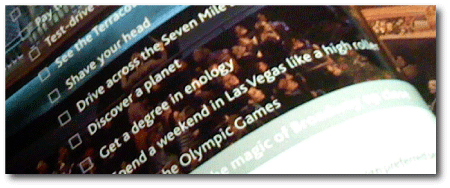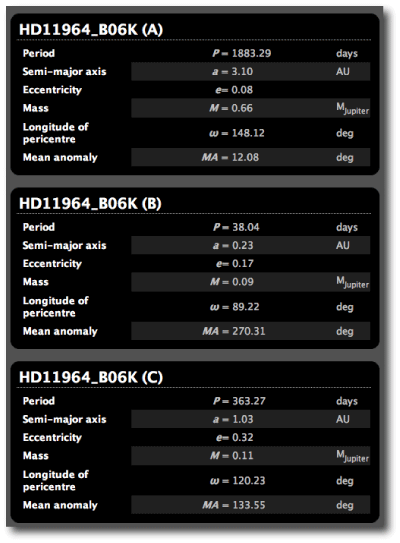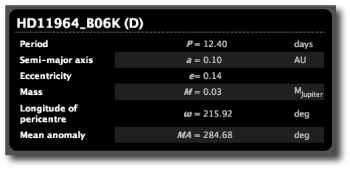
Image Source.
My tight 30-minute layover in Denver turned into an eight-hour delay yesterday when a solenoid somewhere in our Boeing 777 malfunctioned just prior to pushback, giving me an unexpected opportunity to attempt to catch up on all the work that’s been piling up.
After 6 hours of tapping on the laptop, I’d exhausted my effectiveness, so I bought glossy magazines from the airport newstand. In the latest issue of Portfolio from Conde Nast, you can read an in-depth Vanity Fair style puff piece on ex-Tyco CFO Mark Swartz’s life in the Big House, and, in one of the advertisements, you’re encouraged to use a Visa “Signature” card to charge up some of the finer experiences in life. Quite to my surprise, #17 on a list that includes “See the Tony Awards live”, and “Test-drive a supercar”, is “Discover a planet”.

Now regular visitors to oklo.org all know that you can get your planet-discovery experience right here on the systemic backend without ever having to reach for your wallet. In fact, just yesterday, we learned from Gregory’s latest preprint on astro-ph that Eric Diaz (and a number of other systemic users) appear to have made the first characterizations of the most statistically probable planetary system fits to the HD 11964 radial velocity data set.
The HD 11964 data set was published by Butler et al. (2006). Two planets are already known to orbit this star. HD11964 b has roughly 1/3rd of a Saturn mass and a ~38-day orbit, whereas HD 11964 c is a sub-Jovian mass planet on a ~2110-day orbit. There’s a wide dynamically stable gap between the two planets, making this system a fertile hunting ground for additional companions.
Gregory does an extensive statistical analysis and argues that there’s strong evidence for a sub-Saturn mass planet on a year-long orbit. Eric Diaz’s version of this planet shows up in the fit that he submitted to systemic back in July 2007:

Eric also suggests the presence of a 12.4-day planet in the system. The Gregory analysis suggests that this planet is not statistically significant, but I’m going to add it to the transitsearch.org unpublished candidates list. There’s certainly no reason not to have a look-see if anyone has unused photometric capability.


Greg:
And how do you discover a planet with the Visa?
Mike
I’d guess you could use it in place of the piece of fairy cake in the Total Perspective Vortex, extrapolate the entire universe which would then tell you about all the planets?
Another paper using the Systemic Console !
http://fr.arxiv.org/abs/0709.1656
check page 8.
Luis